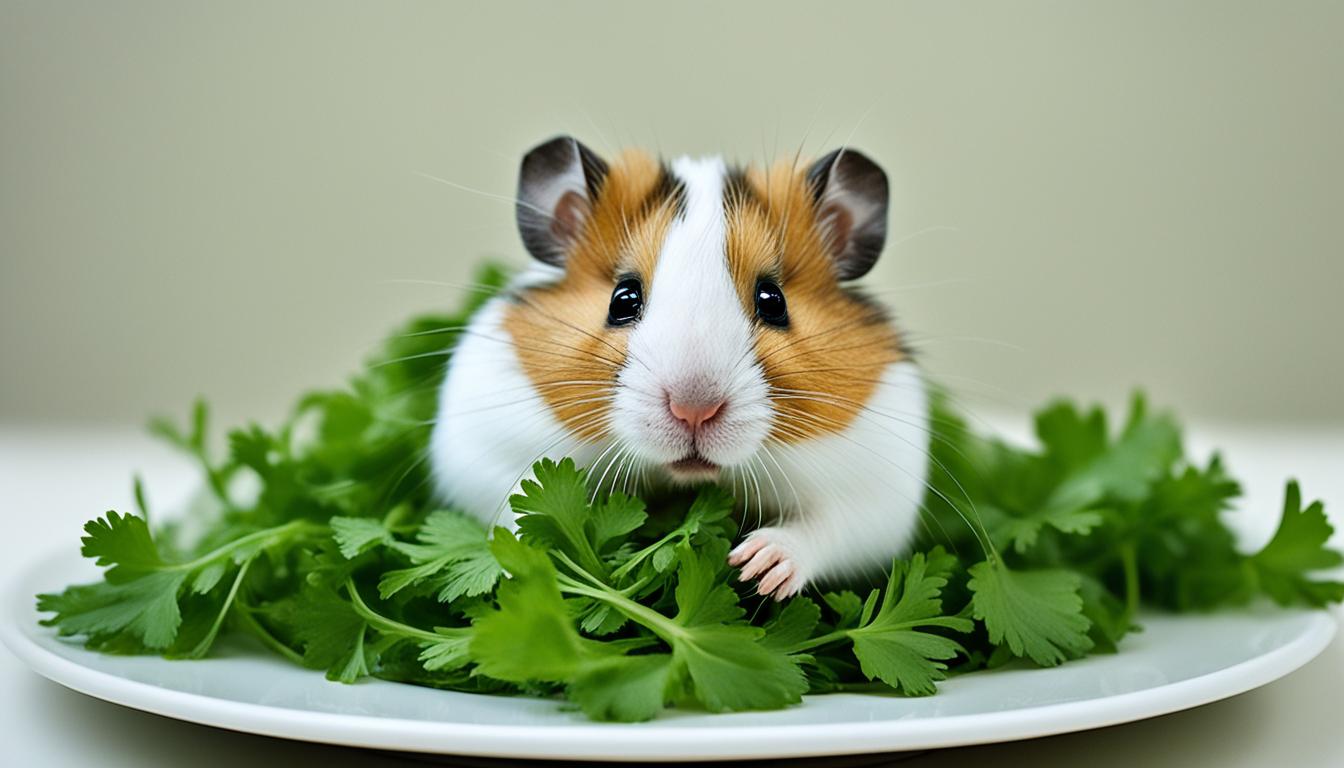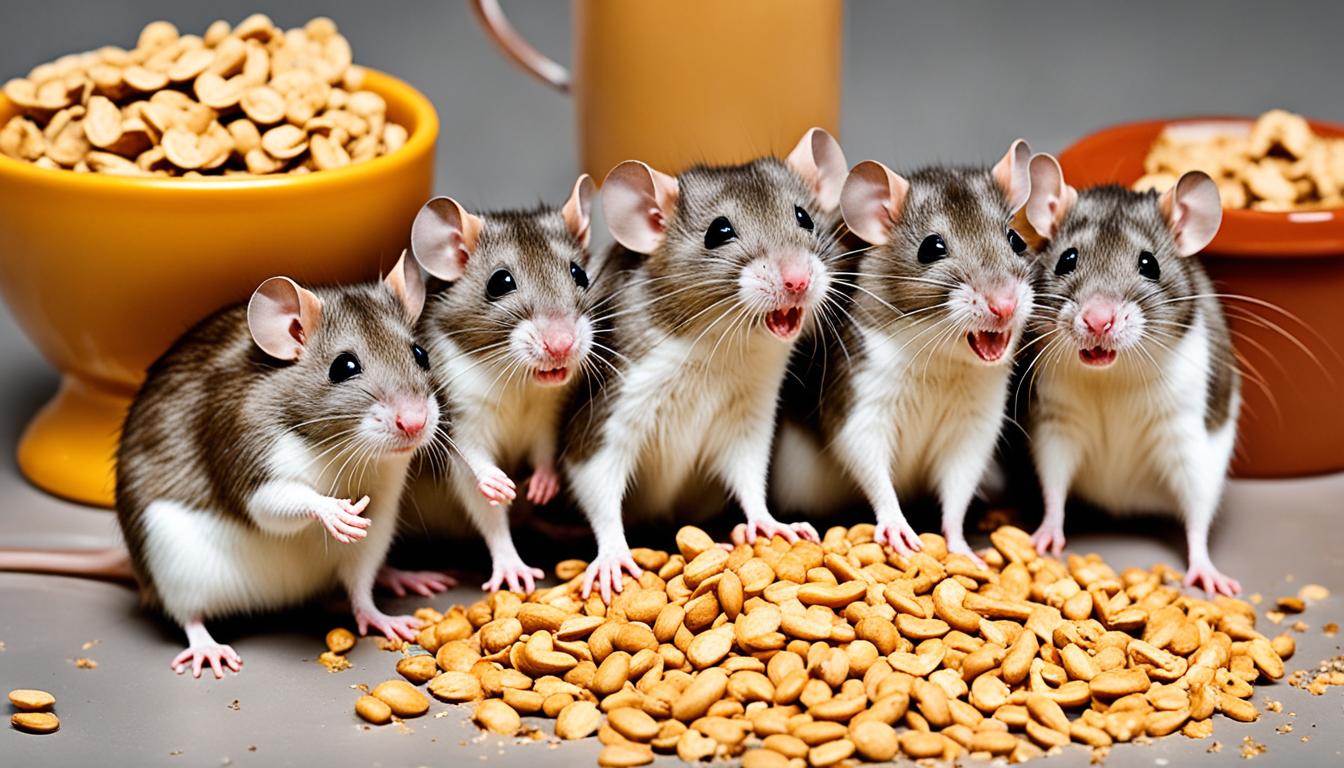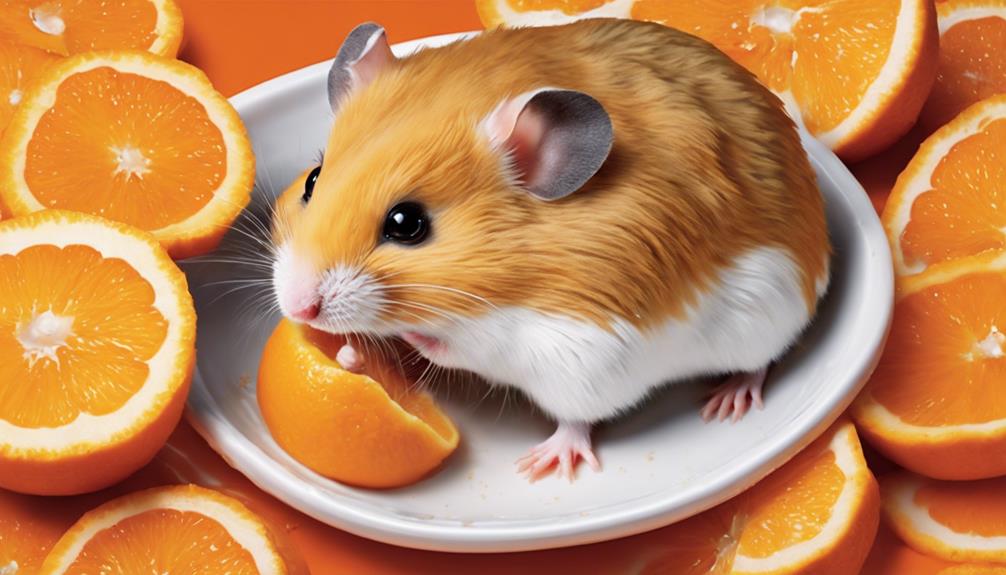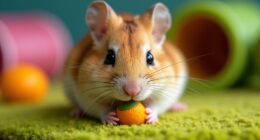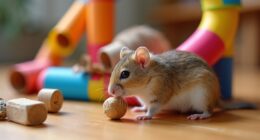Are you aware of the fact that hamsters have specific dietary requirements that can significantly affect their health and overall well-being? While many believe that these tiny creatures only require commercial pellet food, they can also enjoy a variety of fresh foods in moderation. Cilantro, a popular herb in numerous cuisines, is one example. But is it safe for hamsters to consume cilantro? Let’s delve into the nutritional advantages and feeding recommendations for giving cilantro to your furry companion.
Key Takeaways:
- Hamsters can eat cilantro occasionally, but it should be served as a treat or supplement to their regular diet.
- Cilantro, along with other safe fruits and vegetables, can provide variety and additional nutrients for your hamster.
- Most of your hamster’s diet should consist of a commercial pellet food formulated for hamsters.
- It’s important to consult with a veterinarian for personalized advice on your hamster’s nutrition.
- Offer a balanced diet and ensure your hamster’s portions are appropriate to prevent weight gain.
Including Cilantro in Your Hamster’s Diet
When it comes to creating a healthy and well-balanced diet for your hamster, including cilantro can add variety and essential nutrients to their meals. However, it’s important to remember that cilantro and other safe fruits and vegetables should be considered as additions to your hamster’s diet rather than staple foods.
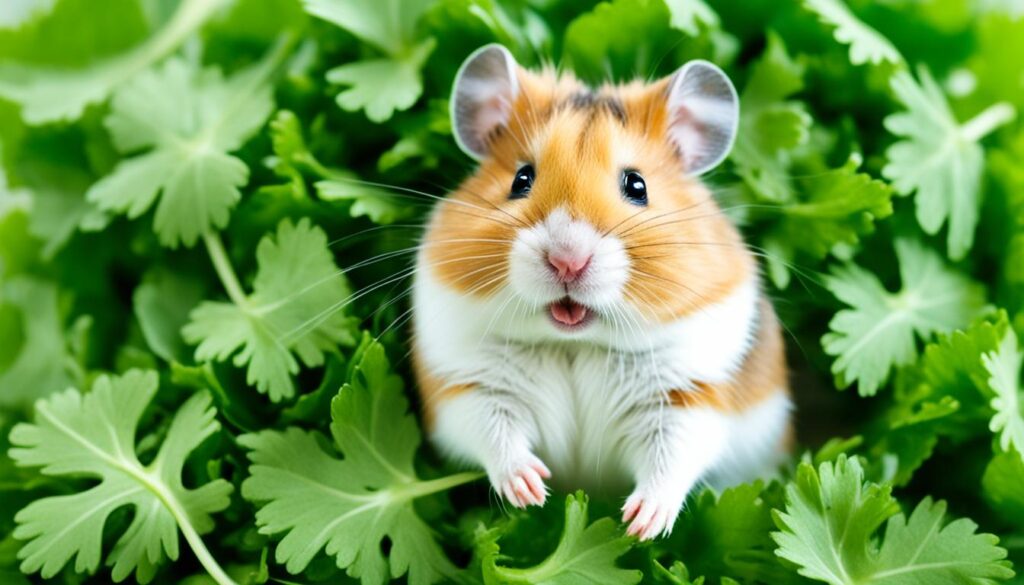
As with any fresh food, the key is moderation. You can rotate the fresh foods you offer to your hamster each day, introducing new flavors and textures. This not only adds excitement to their meals but also ensures they receive a diverse range of nutrients. However, keep the portions small to maintain a balanced diet for your hamster.
“Including cilantro in your hamster’s diet can provide enrichment and stimulate their natural foraging instincts.”
Offering fresh cilantro and other fruits and vegetables as treats can provide enrichment and stimulate your hamster’s natural foraging instincts. It’s important to keep an eye on their preferences and adjust accordingly. Remember, every hamster is unique, so it may take some trial and error to figure out which fresh foods they enjoy the most.
Balancing Your Hamster’s Diet
While it’s exciting to incorporate fresh foods like cilantro, it’s crucial to ensure that the majority of your hamster’s diet consists of a commercial pellet food formulated specifically for hamsters. These pellets are specially balanced to provide your little friend with all the necessary nutrients they need for optimal health.
Here is a simple guide to balancing your hamster’s diet:
- Commercial pellet food: Feed your hamster about 1/8-1/3 cups of pellets daily, depending on their size and appetite. This should be the main component of their diet.
- Cilantro and other fresh foods: Offer small portions of fresh cilantro and other safe fruits and vegetables as treats. Remember to remove any uneaten fresh food to prevent spoiling.
- Timothy hay: Provide Timothy hay as a source of dietary fiber and enrichment. Your hamster will enjoy nibbling on the hay, and it also aids in maintaining healthy digestion.
By following this balanced approach, you can ensure that your hamster receives a well-rounded diet that meets their nutritional needs. Remember to consult with a veterinarian if you have any concerns about your hamster’s nutrition or if you’re unsure about which fresh foods are safe to include in their diet.
How to Feed Cilantro to Your Hamster
When it comes to adding fresh cilantro to your hamster’s diet, it’s important to do so in a safe and controlled manner. Here are some steps to follow:
1. Wash Fresh Cilantro Thoroughly
Before feeding cilantro to your hamster, make sure to wash it thoroughly to remove any dirt or chemicals. This step is crucial to ensure your hamster’s safety and well-being.
2. Offer a Small Amount as a Treat
Cilantro should be offered to your hamster as a treat, not as a staple food. It should be given in small quantities to prevent overconsumption and to maintain a balanced diet. Remember, moderation is key.
3. Combine Cilantro with Other Fruits and Vegetables
You can mix fresh cilantro with other safe fruits and vegetables to provide a variety of flavors and nutrients. Just like humans, hamsters enjoy a diverse diet. Offer a small portion of cilantro alongside other fresh foods.
4. Remove Uneaten Cilantro Daily
It is important to remove any uneaten cilantro and other fresh food from your hamster’s enclosure each day. Leaving food out for too long can lead to spoilage and potential health issues. By removing uneaten food, you ensure that your hamster’s environment remains clean and hygienic.
| Steps to Feed Cilantro to Your Hamster |
|---|
| Step 1: Wash fresh cilantro thoroughly |
| Step 2: Offer a small amount as a treat |
| Step 3: Combine cilantro with other fruits and vegetables |
| Step 4: Remove uneaten cilantro daily |
By following these steps, you can safely add cilantro to your hamster’s diet as an occasional treat. Remember to always prioritize a commercial pellet food as the main source of nutrition for your furry friend. Consult with a veterinarian for personalized advice on your hamster’s specific dietary needs.

What Should Your Hamster’s Main Food Source Be?
When it comes to your hamster’s nutrition, commercial pellet food should be the main focus of their diet. These specially formulated pellets provide the essential nutrients that your hamster needs to thrive. Along with pellet food, Timothy hay is a crucial component of your hamster’s diet, serving as both a source of bedding and dietary fiber.
While there are various options available in the market, it’s important to choose a high-quality pellet food that is specifically designed for hamsters. Avoid formulas that primarily consist of seeds, nuts, and dried fruits. These types of food are often higher in sugar and fat, and may not provide the necessary balanced nutrition for your furry friend.
Here are a few key reasons why commercial pellet food should be your hamster’s main food source:
- Nutritional Balance: Commercial pellet food is formulated to meet the nutritional needs of hamsters. It contains a balanced combination of proteins, carbohydrates, fats, vitamins, and minerals.
- Convenience: Pellet food is easy to store, measure, and feed. It eliminates the hassle of finding, preparing, and portioning out various ingredients for your hamster’s meals.
- Digestive Health: The composition of pellet food ensures proper digestion for your hamster. It helps maintain their overall digestive health and prevents issues such as diarrhea or constipation.
While commercial pellet food should make up the majority of your hamster’s diet, it’s important to regularly supplement their meals with approved fresh foods, such as small amounts of fruits and vegetables. This helps provide additional nutrients, variety, and enrichment to their diet.
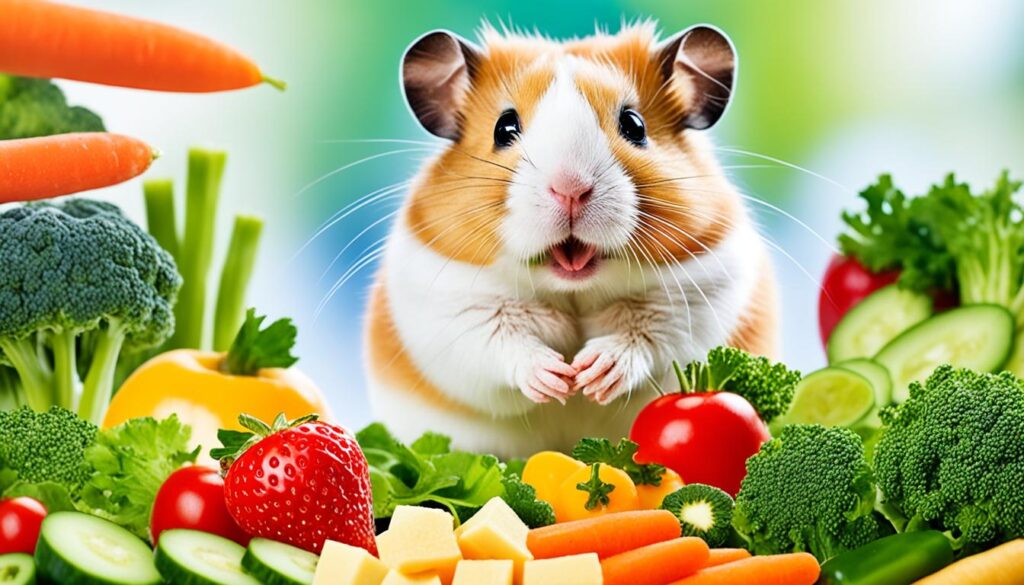
Which Fruits and Vegetables Can Hamsters Eat?
When it comes to incorporating fruits and vegetables into your hamster’s diet, there are plenty of options to choose from. Most vegetables and fruits are safe for hamsters to consume in moderation, providing them with essential nutrients and variety in their meals.
However, it’s important to be aware of certain fruits and vegetables that should be avoided. Citrus fruits like oranges or grapefruit can be too acidic for hamsters’ delicate digestive systems, so it’s best to steer clear of them. Additionally, dried fruits or vegetables should also be avoided as they often contain high levels of sugar that can be harmful to your furry friend’s health.
Here are some safe and nutritious fruits and vegetables that you can include in your hamster’s diet:
- Leafy greens: Spinach, kale, and lettuce provide essential vitamins and minerals.
- Root vegetables: Carrots and radishes are crunchy treats that hamsters enjoy.
- Berries: Strawberries, blueberries, and raspberries are packed with antioxidants.
- Squash: Zucchini and butternut squash are tasty options for your hamster.
- Cucumbers: These refreshing vegetables help keep your hamster hydrated.
- Apple slices: Remove the core and seeds, and offer your hamster small apple slices as a treat.
Remember to introduce new foods gradually to monitor your hamster’s reaction and prevent any digestive issues. Offering a varied diet of safe fruits and vegetables alongside a balanced commercial pellet food will help ensure your hamster’s overall well-being.
“Including a variety of fruits and vegetables in your hamster’s diet not only provides essential nutrients but also adds interest and stimulation to their meals.”
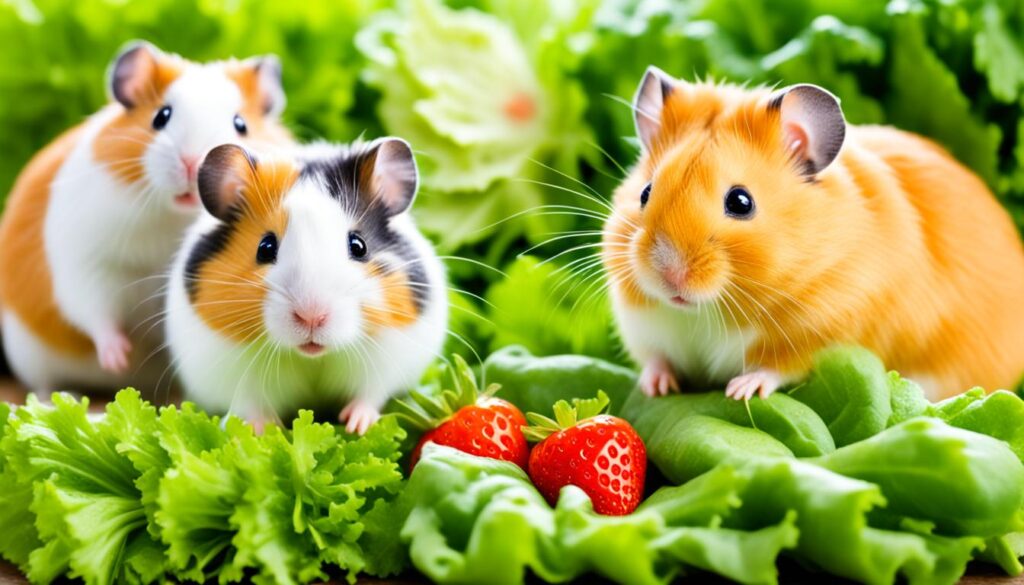
Safe Fruits and Vegetables for Hamsters
| Fruits | Vegetables |
|---|---|
| Strawberries | Spinach |
| Blueberries | Kale |
| Raspberries | Lettuce |
| Apple slices | Carrots |
| – | Radishes |
| – | Zucchini |
What Other Foods Can Hamsters Eat?
Hamsters are omnivores, which means they can eat a variety of foods, including some animal protein. Incorporating protein-rich foods into your hamster’s diet can provide them with essential nutrients and added variety. Here are some options:
- Hard-Boiled or Plain Scrambled Eggs: Eggs are a great source of protein for hamsters. You can offer small pieces of hard-boiled eggs or plain scrambled eggs as an occasional treat. Make sure to remove any uneaten portions to prevent spoilage.
- Mealworms: Mealworms are another protein-rich option that hamsters enjoy. These small worms can be offered as a treat or added to their regular food. Ensure they are from a reputable source and provide them in moderation.
- Whole Grain Crackers: For a crunchy snack, you can offer your hamster some whole grain crackers. Look for options that have minimal added sugars and salts. Break the crackers into small pieces suitable for your hamster’s size.
- Sugarless Cereal: Some sugarless cereals can be a fun and occasional treat for your hamster. Look for options with whole grains and no added sugars. Offer small amounts and monitor their reaction to ensure they tolerate the cereal well.
Remember, these additional foods should be offered in moderation and as treats, rather than the main part of your hamster’s diet. Always observe your hamster’s preferences and digestive tolerance when introducing new foods.

How Much Should Hamsters Eat?
When it comes to feeding hamsters, it’s important to strike the right balance. Providing them with the proper portion size ensures they receive the nutrition they need without overeating. So, how much should hamsters eat?
On average, hamsters should eat about 1/8-1/3 cups of pellets daily, supplemented with fresh food. However, it’s essential to note that the portion size may vary depending on factors such as the hamster’s age, breed, and size. For accurate and personalized recommendations, consulting with a veterinarian is the best approach.
Feeding hamsters too much can lead to weight gain and associated health issues. That’s why it’s crucial to calculate their ideal daily calorie intake to avoid overfeeding. By providing the right portion size, you can help keep your hamster happy, healthy, and in great shape.
Creating a Nutritious Hamster Diet:
It’s important to remember that the portion size mentioned above includes both pellets and fresh food. To ensure a well-rounded and enjoyable diet for your furry friend, consider the following:
- Commercial pellets: These should form the main part of your hamster’s diet. Choose a high-quality pellet food specifically formulated for hamsters.
- Fresh food: Offer a variety of fresh fruits, vegetables, and occasional treats in small quantities. This provides additional nutrients and mental enrichment for your hamster.
Here’s a table summarizing the portion sizes:
| Food Type | Portion Size |
|---|---|
| Pellets | 1/8-1/3 cups per day |
| Fresh food | Small quantities as treats |

“Proper portion size is key to a healthy hamster diet. Providing a balanced combination of pellets and fresh food ensures your hamster receives the necessary nutrients without overindulging.”
To further guide you in creating a nutritious hamster diet, here are some additional tips:
- Rotate the types of fresh foods you offer to provide variety and prevent boredom.
- Wash fresh fruits and vegetables thoroughly before feeding them.
- Remove any uneaten fresh food daily to prevent spoilage.
By carefully monitoring portion sizes and offering a well-balanced diet, you can keep your hamster happy, healthy, and thriving.
When Should You Feed Your Hamster?
Hamsters are nocturnal creatures, which means they are most active at night. Because of their natural inclination, they may prefer to eat during the nighttime hours. However, when it comes to feeding your hamster, there is some flexibility in timing.
When it comes to pellets, you can provide them at any time of day. This ensures that your hamster has constant access to their main source of nutrition. However, when it comes to offering fresh food like cilantro, it is recommended to do so in the evening. By providing fresh food during the evening hours, your hamster will have the opportunity to enjoy it during their active period.
If your hamster does not consume all the fresh food you provide, make sure to remove any uneaten portions in the morning. This prevents the food from spoiling and keeps your hamster’s cage clean and hygienic.
“Feeding fresh food like cilantro in the evening allows your hamster to enjoy it during their active period.”
It’s important to note that every hamster has different preferences and habits. If you consistently find that your hamster leaves fresh food uneaten, it may be worth reducing the portion size. Adjusting the amount of fresh food based on your hamster’s eating habits ensures they receive the right amount of nutrition without wasting food.
Creating a feeding schedule that aligns with your hamster’s natural behavior can help promote a healthy relationship with food. By understanding their nocturnal nature and adjusting feeding times accordingly, you can ensure your hamster has access to fresh food during their active hours.
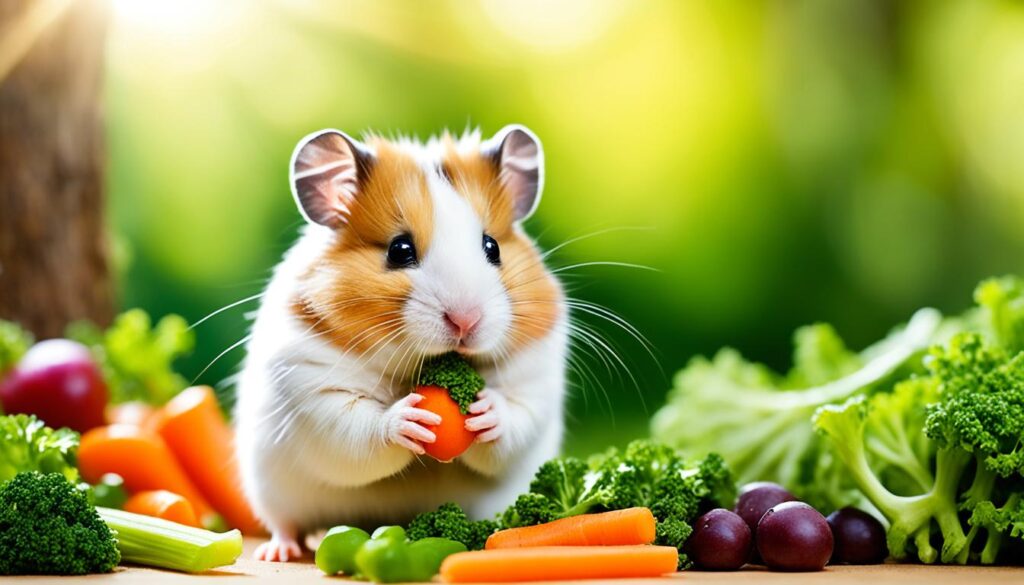
Conclusion
After careful consideration, we can confidently say that hamsters can enjoy cilantro as part of their diet. However, it’s crucial to remember that cilantro should only be given as an occasional treat or supplement to their regular food.
To ensure proper nutrition for your furry friend, the main source of their diet should be a high-quality, commercial pellet food specifically formulated for hamsters. These pellets contain the essential nutrients and vitamins that hamsters need to thrive.
That being said, fresh fruits and vegetables, including cilantro, can be offered in small quantities to provide variety and additional nutrients. Just remember to wash the cilantro thoroughly before serving it to your hamster, and remove any uneaten fresh food daily to prevent spoilage.
If you have any concerns or questions about your hamster’s nutrition, it’s always a good idea to consult with a veterinarian. They can provide personalized advice based on your hamster’s specific needs, ensuring that they receive the best possible care and diet.
